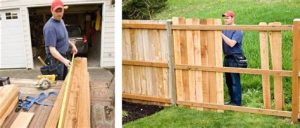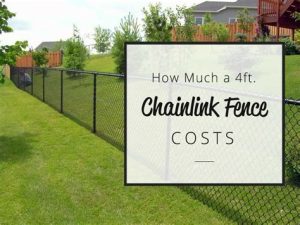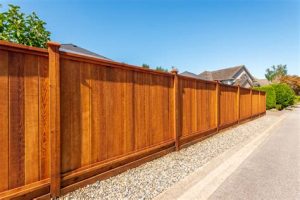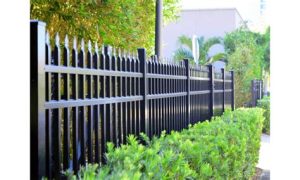Discover essential factors for choosing the right fence: purpose, zoning regulations, privacy, aesthetics, and the benefits of consulting a professional installer.When it comes to fence installation, choosing the right height is a crucial decision that can significantly impact your property’s functionality, privacy, and aesthetics. A well-selected fence not only enhances the curb appeal of your home but also serves essential purposes, from providing security to defining boundaries. However, before you dive into the design options available, it’s important to consider various factors. From understanding local zoning regulations to evaluating your specific needs for privacy and security, each element plays a vital role in determining the ideal height for your fence. Additionally, aesthetic and architectural considerations ensure that your fence complements the overall look of your property. This blog post will guide you through these key aspects, culminating in the importance of consulting with a professional fence installer to bring your vision to life. Let’s explore how to choose the right height for your fence installation!
Determining the Purpose of Your Fence
When considering fence installation, the first step is to determine the purpose of your fence. This decision will guide not only the design and materials used, but also the height, style, and overall functionality of the fence. Understanding why you need a fence will help you make informed choices.
- Privacy: If you live in a densely populated area or have close neighbors, a tall, solid fence can provide a sense of seclusion and help ward off prying eyes.
- Security: For those concerned about safety, stronger and higher fences can deter unwanted intruders and keep pets or children safe within the yard.
- Aesthetics: A fence can enhance the curb appeal of your property. Choosing a design that complements your architecture is important, especially for properties in upscale neighborhoods.
- Boundary Demarcation: Fences can clearly define your property line and establish boundaries, which is essential in preventing disputes with neighbors.
Ultimately, the purpose will influence whether you opt for a charming picket fence, a robust privacy fence, or a decorative wrought iron design. Once you have a clear understanding of your goals, you can proceed with the other essential aspects of fence installation.
Understanding Local Zoning Regulations
When you’re considering a new fence installation, it’s critical to understand local zoning regulations that may influence your project. These regulations can vary significantly from one area to another, and they often dictate important factors such as the maximum height of fences, placement relative to property lines, and required permits.
Many municipalities have established specific rules governing fencing to maintain a certain aesthetic and ensure safety in residential areas. For instance, some communities may require that fences in front yards not exceed a specified height, often around 3 to 4 feet, while back yard fences may be allowed to be taller, typically between 6 to 8 feet. It’s essential to check these regulations to avoid any legal issues or having to modify an already constructed fence.
Moreover, zoning regulations might also consider the unique characteristics of your neighborhood. Factors such as privacy, visibility, and neighborhood cohesion can greatly affect what is permissible. If you’re unsure about your local rules, contacting your local zoning office or consulting an experienced fence installer can provide valuable insights, ensuring your installation complies with all necessary guidelines.
Considering Privacy and Security Needs
When it comes to fence installation, determining the proper height is crucial for both privacy and security. If you’re looking to create a more private space in your yard, a taller fence may be necessary to block the view from neighbors or passersby. On the other hand, if your main concern is keeping unwanted visitors out, you’ll want to consider the appropriate height that will discourage trespassers while still meeting local regulations. It’s a balance that requires careful consideration.
- Neighborhood Norms: Look around your area to see the typical height of fences. It can provide you with a good baseline for your fence choice.
- Purpose: Define the primary purpose of the fence. Is it more about privacy, security, or a combination of both?
- Natural Barriers: Consider existing elements such as trees or bushes that may complement the height of your fence for added privacy.
In addition to height, the material used for the fence will also play a significant role in how effective it is in maintaining privacy and enhancing security. Solid wood or vinyl fences can provide a substantial privacy barrier, while wrought iron or chain-link may not serve the same purpose. Always take into account how your fence choice aligns with your overall privacy and security goals.
Evaluating Aesthetic and Architectural Factors
When considering a fence installation, it’s crucial to evaluate the aesthetic and architectural factors that will influence the overall appearance of your property. A fence serves not only as a barrier but also as a design element that can either complement or detract from the existing architecture of your home.
One primary aspect to consider is the style of the fence. For instance, a traditional picket fence might harmonize beautifully with a classic colonial-style home, while a modern horizontal slat fence might be better suited for contemporary architecture. It’s essential to choose a fence design that synchronizes with your home’s style to maintain a cohesive look throughout your landscape.
Furthermore, the material of the fence plays a significant role in the aesthetic appeal. Materials such as wood, vinyl, or wrought iron offer various looks and can complement different architectural designs.
Consulting with a Professional Fence Installer
When it comes to fence installation, consulting with a professional installer can make a significant difference in the outcome of your project. Professionals bring expertise that is invaluable, especially if you’re unsure about the design, type of materials, or the specific regulations pertaining to fences in your area.
- Experience: They understand the nuances of various fencing materials and their installation techniques.
- Code Compliance: They are familiar with local zoning laws and permits, ensuring your fence adheres to all regulations.
- Time Efficiency: Professionals can complete the installation faster than a novice, allowing you to enjoy your new fence sooner.
Before hiring a professional, it’s beneficial to conduct some research. Get quotes from multiple installers, check their reviews, and ask about their previous projects. This preparation will help you find the right fit for your needs.
Frequently Asked Questions
What factors should I consider when choosing the height of my fence?
Factors to consider include local zoning laws, privacy needs, security concerns, and the type of fencing material.
Are there legal restrictions on fence heights?
Yes, many municipalities have regulations that dictate the maximum height for residential fences, which can vary by location.
What is the standard height for residential fences?
Typically, residential fences range from 4 to 6 feet in height, depending on their purpose and local regulations.
How can fence height affect my property value?
A well-chosen fence height can enhance curb appeal and privacy, making the property more attractive to potential buyers.
Should I consider the height of my neighbors’ fences?
Yes, it’s important to consider the height of neighboring fences to ensure a harmonious appearance and prevent disputes.
What are the benefits of a taller fence?
A taller fence can provide enhanced privacy, improved security, and noise reduction from outside disturbances.
How do I determine the best height for a fence meant for pets?
The ideal height for a pet fence typically ranges from 5 to 6 feet, depending on the type of pet and their ability to jump or dig.





